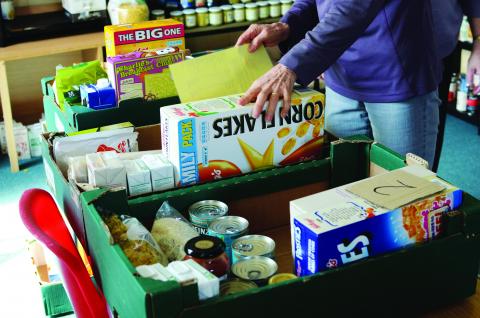New Government Data Shows the £20 Uplift is Likely to Have Protected Families on Universal Credit from Food Insecurity
by Shona Goudie
The Department of Work and Pensions conduct an annual measurement of food insecurity levels as part of the Family Resources Survey. In this data story we summarise the main findings from the Government's survey published in March 2022 on food insecurity levels in 2020-21. We also compare the findings to the survey a year earlier.
*("Low" or "very low" food security is defined as food insecure; "marginal" food security is defined as food secure but are more likely to fall into food insecurity in the face of shocks e.g. the cost of living crisis.)
The collection of robust data assessing food insecurity is essential to being able to deliver effective policies to tackle the problem and measure the impact of those policies. However, Government then has a responsibility to act on the data and be held to account for reducing the high levels of food insecurity and particularly the vast inequalities in levels of food insecurity amongst households in receipt of benefits
Despite the evidence on the severity and scale of food insecurity in the UK, there continues to be a lack of government leadership and no strategy for addressing it.
As a first step, the Work and Pensions Committee should launch an inquiry into what the Government is planning to do to reduce the levels of household food insecurity amongst benefits claimants.
For more up to date data on food insecurity levels from The Food Foundation see our food insecurity tracker (new data coming April 2022)
Background
Food insecurity (sometimes referred to as food poverty) is the state of being without reliable access to a sufficient quantity of affordable, nutritious food.
In February 2019, after years of campaigning by The Food Foundation and other advocacy organisations, the Department of Work and Pensions committed to start measuring household food insecurity as part of their annual Family Resources Survey. Before this, there was no official measurement of national food insecurity levels in the UK.
This is an annual survey, covering all four nations and has a large sample of 20,000 households. Data is gathered over the course of a year and reported a year later. The first data was published in 2021 capturing levels of food insecurity from 2019-20 (pre-pandemic).
Food insecurity is measured over a 1-month recall period. This recall period is shorter than the standard 12 months used in main measurements of food insecurity and so captures less people who are experiencing transient food insecurity.






